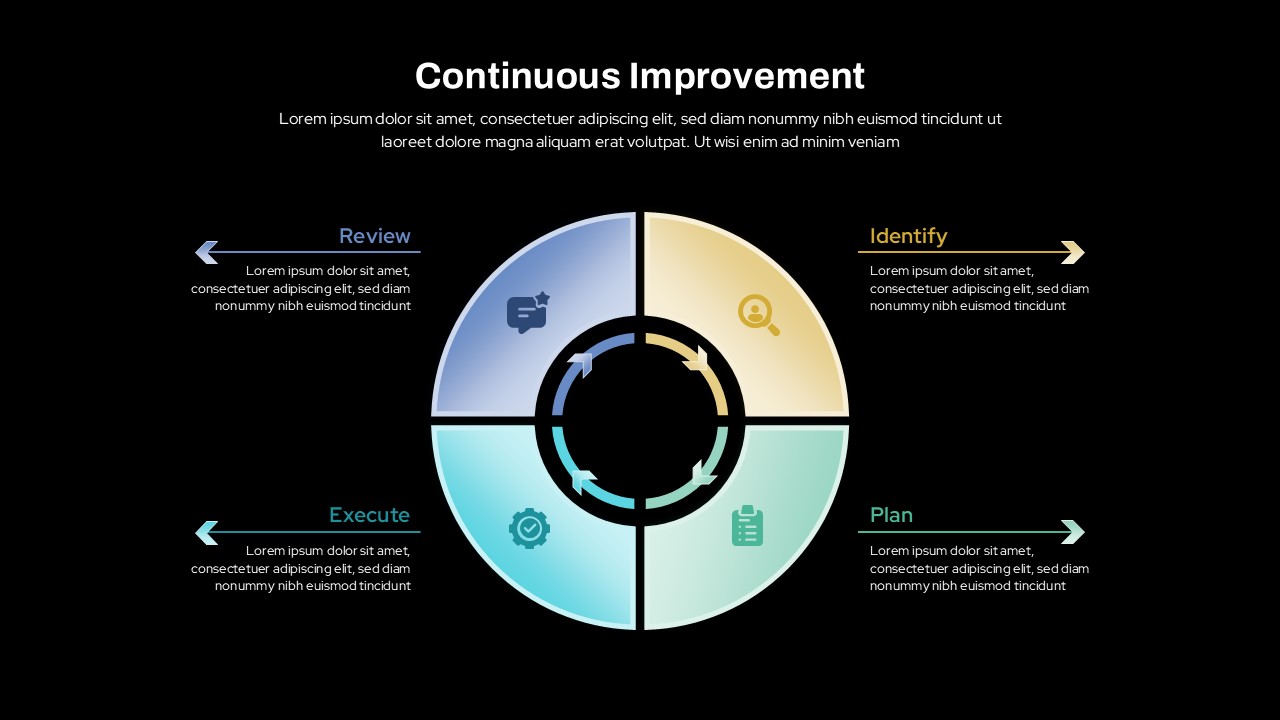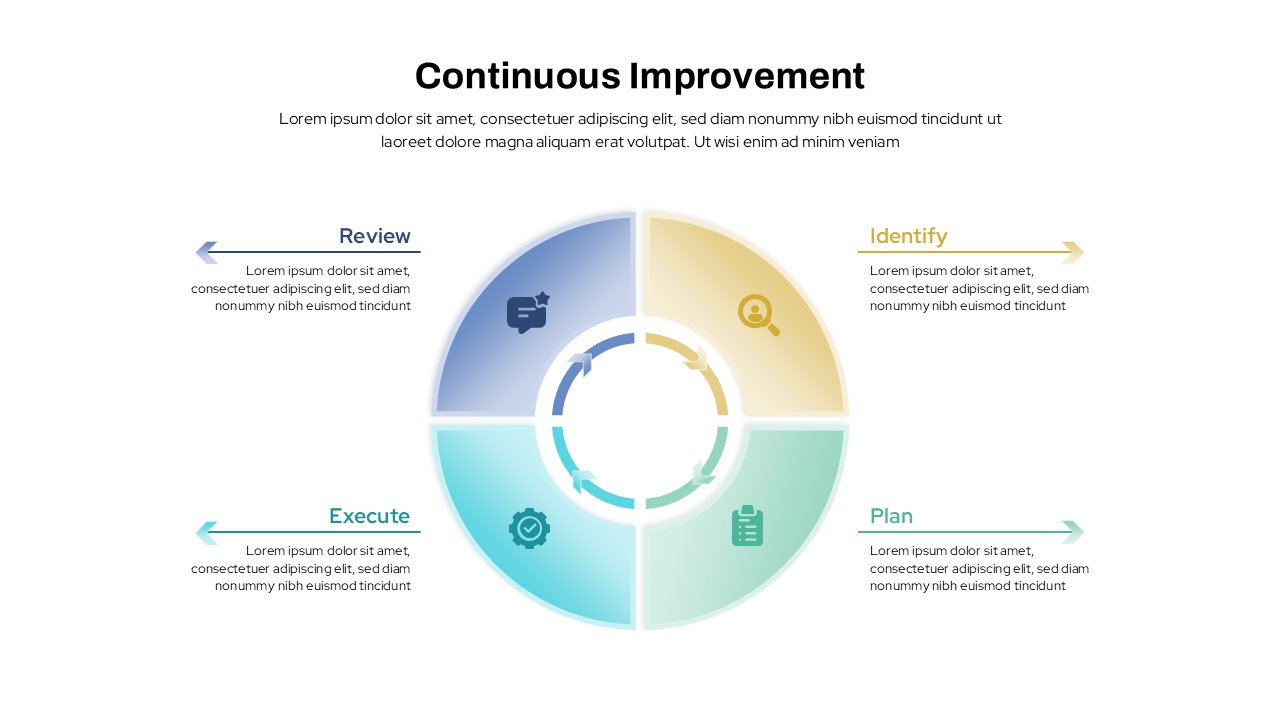continuous-improvement-dark-template-powerpoint-google-slides


Description
This slide presents a circular, four-quadrant continuous improvement diagram to illustrate iterative workflows and process enhancements. At the top sits a bold “Continuous Improvement” title and subtitle placeholder for an introductory sentence. The center features a segmented ring with directional arrows flowing clockwise, connecting four equidistant semi-circular quadrants. Each quadrant is color-graded—golden yellow for Identify, mint green for Plan, turquoise for Execute and cornflower blue for Review—and holds a representative icon alongside a concise label. Outside each quadrant, aligned arrowed text placeholders describe each stage in detail. Rounded elements, subtle drop shadows and smooth gradient fills contribute to a modern, polished aesthetic.
Designed for rapid editing, all elements are built on master slides and converted to vector shapes. You can easily swap icons, adjust gradient stops, reassign colors or modify text blocks without disturbing the underlying layout. The modular ring and quadrant sizes are fully customizable, enabling you to add or remove steps or resize segments for alternate frameworks. A dark-mode variant enhances contrast in low-light environments, while the light theme preserves clarity in bright conference rooms. Both versions maintain perfect resolution and alignment in PowerPoint and Google Slides, eliminating version conflicts and formatting issues.
Ideal for Kaizen events, PDCA cycles or Six Sigma presentations, this template can also represent any cyclic or stage-based methodology. Duplicate the ring to expand the cycle, update labels for tailored processes or integrate data-driven icons to visualize metrics at each stage. With flexible spacing and intuitive placeholders, you can transform this visual into a process roadmap, learning loop or project lifecycle diagram in seconds.
Who is it for
Process improvement specialists, quality managers, project leaders and operations consultants will leverage this cycle diagram to illustrate iterative PDCA workflows and drive continuous enhancements. Lean practitioners, Six Sigma champions and change-management teams can also use it to engage stakeholders, standardize review processes and guide organizational improvement initiatives.
Other Uses
Beyond continuous improvement, repurpose this infographic to depict product development life cycles, risk assessment loops or learning and development programs. Simply relabel quadrant titles, adjust icons and modify text placeholders to map out any four-stage process—such as employee onboarding, strategic planning, maintenance schedules or compliance audits.
Login to download this file

















































